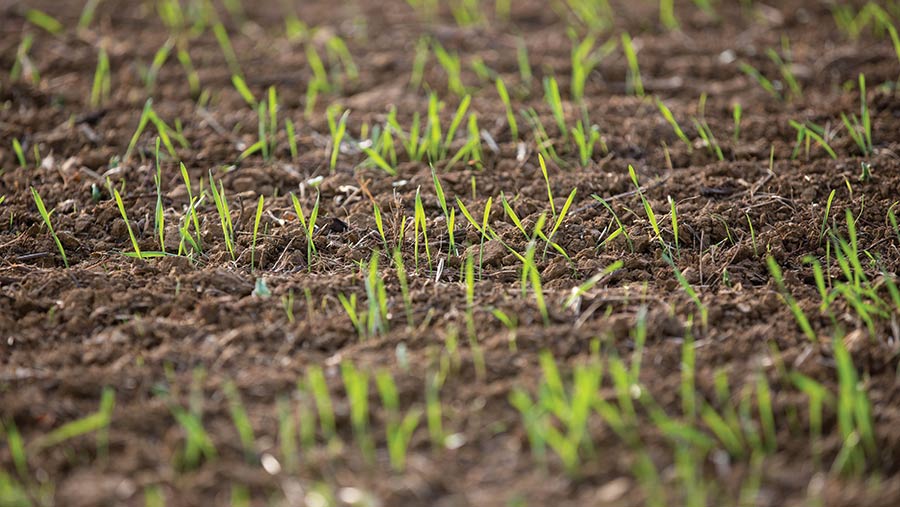Wheat market outlook bearish despite poor autumn plantings
 © Tim Scrivener
© Tim Scrivener Wheat prices are forecast to remain fairly poor as the year draws to a close, with a large availability of grain globally and significant exports from Russia and Ukraine limiting any gains.
The AHDB announced at its Grain Market Outlook Conference in York on 28 November that El Nino weather conditions are going to be a key market driver moving forward, although Black Sea geopolitics could also play a role.
Anthony Speight, AHDB senior analyst, told Farmers Weekly that markets have the potential to be bearish, but with an element of caution.
See also: Barley at £156/t provides good value alternative to wheat
Mr Speight said: “This is from the ongoing tensions in the Black Sea region and the potential effects that the El Nino weather event will have on Brazil’s maize crop at the start of 2024.
“New-crop pricing is starting to come into the limelight, with European and Black Sea planting progression and weather coming into focus,” he added.
Russian and Ukrainian exports continue to weigh on markets in the EU and UK, with Ukrainian feed wheat exports at an almost £70/t discount to UK feed wheat.
A lack of autumn plantings across Europe could support prices later into next year if spring plantings also struggle. Currently, however, EU wheat production for next year’s harvest is forecast down just 1%.
Domestic plantings
A wet autumn has also affected plantings in the UK, and AHDB senior analyst Helen Plant said poorer 2024 prospects had already been factored into both old- and new-crop prices.
UK feed wheat futures opened at £195/t on 29 November for the May 2024 contract.
The levy board also released its first UK cereals supply-and-demand estimates for 2023-24 at the conference.
UK wheat production was provisionally forecast to be down by 1.5m tonnes on the year at 14m tonnes due to a smaller planted area.
Higher volumes of carryover stock and a marginal increase in import volumes are projected to be offset by a smaller wheat crop.
Both human and industrial demand and animal feed are expected to grow year on year.
Increased demand combined with lower quality wheat is likely to keep milling premiums high.
Barley
Total availability of barley is estimated to be marginally lower in 2023-24 due to reduced production.
Olivia Bonser, cereals analyst at AHDB, said: “For barley, despite a small fall in domestic consumption, lower availability again leads to a tighter-than-average balance.”
Polish border blockades
Truckers and farmers in Poland have been protesting on the Ukrainian border since early November, blocking Ukrainian lorries from entering Poland.
The blockade is likely to remain in place until January, with more than 1,000 lorries reportedly stranded as a result.
Drivers are calling for the EU to reintroduce the quotas on Ukrainian lorries, while farmers in the region are protesting over low grain prices. Truckers in Slovakia are also threatening similar blockades.
